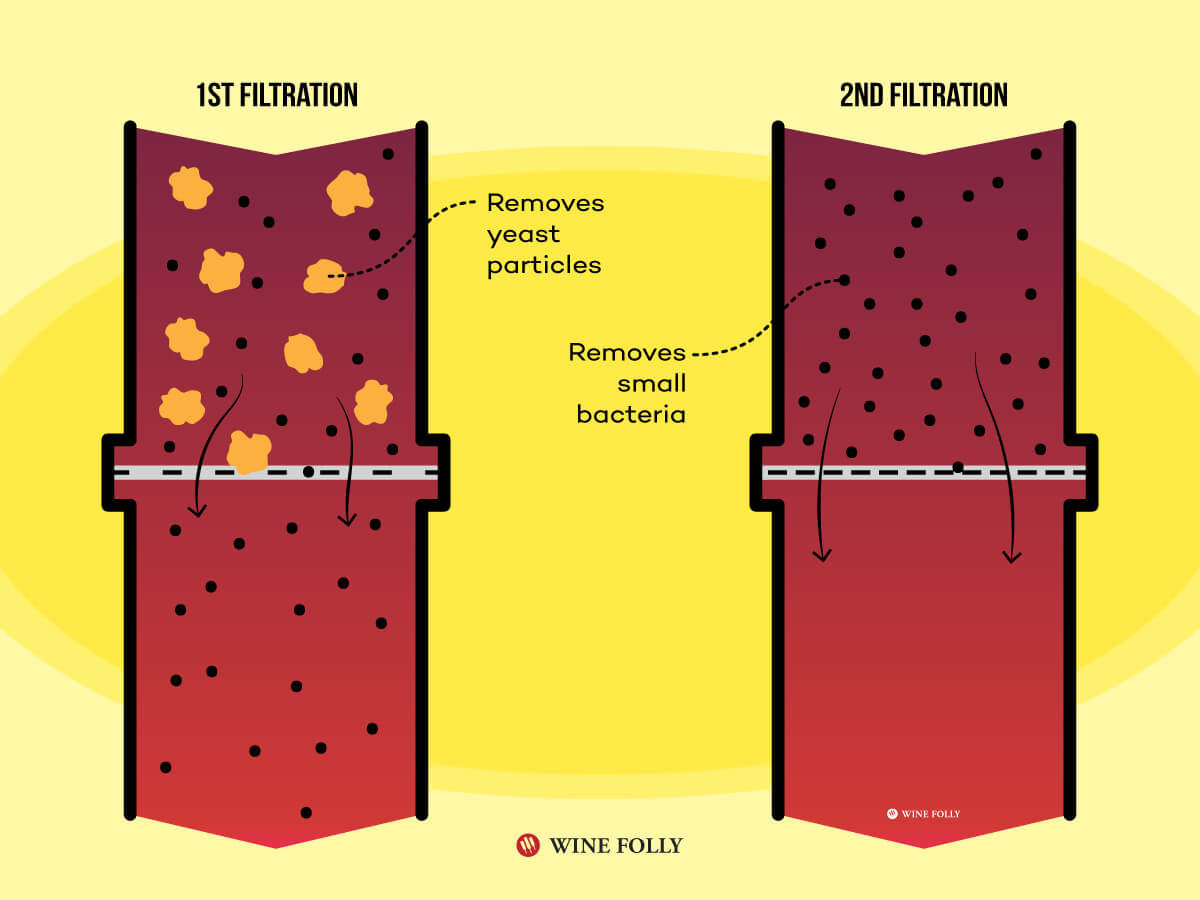What are the pros and cons of filtered vs unfiltered wine? Learn more about wine filtration from German winemaker, Kim Kirchhoff.
Wine is not only a drink, but also a kind of play. It is a subject; a hobby people like to discuss or exchange their knowledge, thoughts, and news on or about. And, just as with any fashionable hobby, it’s subject to trends and techniques.
One big thing happening in the wine industry right now is the trend of unfiltered wine. See it as you like – natural, authentic, back-to-the-roots kind of thing: healthy. The idea of unfiltered wine is quite perfect for the over all “natural” fad of the moment.

Filtered vs Unfiltered Wine: What’s The Difference?
Let’s understand what’s going on technically between filtered vs unfiltered wine first, so that you can understand the differences between the two. As a winemaker, I’ve found that there’s a lot more to this subject than first meets the eye.
Why Wine is Filtered
First, a lowdown on filtered wine. When wine finishes with fermentation, it is full of floating yeast and sediment. It’s what we call “blind” (in America you might refer to it as “cloudy”).
This unclear, blind wine is normally purified, or filtered. That is to say, the yeast particles and microbes are separated from the wine before bottling.

We do this with filtration. Wine typically goes through two filtrations: once for sifting out the yeast to clarify the wine, and the second is for removing any bacteria before bottling.
Which wines are nearly always filtered?
- Sweet white wines
- Floral or fruity dry white wines
- Large production wines
- Botrytis wines

Unfiltered Wines
Unfiltered wine skips the filtration step; but this doesn’t mean that the wine stays cloudy.
Instead of filtering out the yeast, the wine simply rests for a time (no shaking or moving the tanks!). This naturally settles yeast particles through gravity. After this point, the wine gets racked from the lees. Racking is where we siphon off the clear wine from the cloudy wine at the bottom of the tank or barrel.
It results in clarity about the same as filtered wine.
Do those small particles left in unfiltered wines improve the taste?
For the most part, unfiltered wines have the same clarity as filtered wines, so the remaining particles contribute minimally to the body of the wine (scientifically speaking, that is).
Which wines are more commonly available unfiltered?
- Small production red wines
- White wines aged in oak
- Wines with a finished second (malolactic) fermentation
- Dry wines
Unfiltered Wines Are Risky Business
Not to say that unfiltered wines are bad; many are great. However, what happens during the second filtration is very important.
Keep in mind that from a biochemical point of view, wine is nothing more than a beverage in limbo between juice and vinegar. Meaning, finished wine is not a stable medium: it’s in a constant state of change. Also, it’s in danger of going bad.
Any bacteria remaining in the wine increases the risk of spoilage.
Thus, we can either remove bacteria by filtration to eliminate microbial activity (the conventional way), or allow for the presence of bacteria, suppressing their activity in other ways (the unfiltered way).
This suppression can be done in the second fermentation (called Malolactic Fermentation), so that nothing will happen in the bottle anymore. The wine loses its primary fruit flavors and freshness, but transforms into a nutty, creamy kind of wine.
The other option would be to stabilize an unfiltered wine with a higher dosage of SO2 (sulfites).

Filtered vs Unfiltered Wine: Co-Existence Is The Answer
It could be that unfiltered wines are more “open” and “natural.” But as we’ve learned above, it depends.
Both techniques should be accepted for peaceful coexistence. Everyone should try out both styles in a tasting to create a personal preference and opinion. We suggest that you do it in a blind tasting setting!
Fun Fact – Question: Unfiltered wine is nothing new!
So, which unfiltered wine is well-known and still enjoyed after hundreds of years by the whole world?
